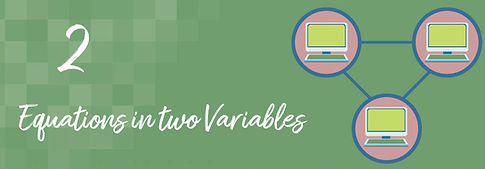
Chapter Outline
Solving linear equations is a fundamental skill that you use regularly. Whether you’re balancing a budget, figuring out the total cost of a shopping trip, or planning a road trip itinerary, the principles of algebra are at play. In this chapter, you will delve into the concepts and techniques essential for mastering linear and literal equations. You’ll learn to solve equations with variables on one or both sides, understand the role of the distributive property, and become proficient in working with literal and absolute value equations. By the end of this chapter, you will be equipped with the skills to tackle algebraic problems efficiently in both academic and real-world contexts.
2.1
Simplifying Expressions
Learning Objectives
By the end of this section, you will be able to:
-
I can recognize and identify variables, terms, coefficients, constants, and like terms in algebraic expression
-
I can evaluate algebraic expressions by substituting values for variables and following the order of operations
-
apply the distributive, commutative, and associative properties to simplify algebraic expressions
-
combine like terms to simplify algebraic expressions to their simplest form
-
determine if two algebraic expressions are equivalent by substituting values for the variables and comparing results.
2.2
Literal Equations
Learning Objectives
By the end of this section, you will be able to:
-
solve for any variable in a literal equation using properties of equality and understand how to manipulate equations to isolate specific variables.
-
apply formulas in literal equations to find unknown values, such as finding the radius from a circumference formula or converting temperatures between Fahrenheit and Celsius.
-
rewrite and solve literal equations in various forms to demonstrate their equivalence, understanding how different manipulations yield the same result.
-
use literal equations to solve real-world problems, such as determining dimensions from given perimeters or areas, by substituting known values and simplifying the expressions to find unknown variables.
2.3
Discrete vs Continuous Graph
Learning Objectives
By the end of this section, you will be able to:
-
differentiate between discrete and continuous data and understand their representations on graphs
-
identify whether a graph should be represented with a line (continuous) or with separated points (discrete)
-
interpret and analyze discrete and continuous graphs to draw conclusions from the data presented
2.4
Writing and Solving Equations in Two Variables
Learning Objectives
By the end of this section, you will be able to:
-
write equations with two variables to accurately represent real-world scenarios and determine possible values for unknown quantities.
-
solve for one variable in a two-variable equation when the other variable’s value is known, using properties of equality such as adding, subtracting, multiplying, or dividing both sides of an equation.
-
use written two-variable equations to solve practical problems, such as calculating dimensions or costs based on given constraints.
-
substitute back the values into the equation to check if the solution satisfies the equation, ensuring my solutions are correct.
2.5
Writing and Graphing Equations in Two Variables
Learning Objectives
By the end of this section, you will be able to:
-
write and graph linear equations that represent real-world scenarios, understanding how to translate practical situations into mathematical models.
-
interpret the solutions of linear equations on graphs, considering constraints and identifying which solutions are practical and viable.
-
distinguish between continuous and discrete graphs, understanding when each type is appropriate based on the nature of the data (e.g., fractional vs. whole number outputs).
-
solve real-world problems by graphing equations and analyzing the graphs to determine relationships between variables, ensuring solutions are appropriate for given constraints.